Science Fiction (Wired): Conventional wisdom holds that science fiction was written almost exclusively by men until the advent of feminism in the  1960s and ’70s. But when Lisa Yaszek, who teaches science fiction studies at Georgia Tech, went digging through old magazines, she discovered a very different story.
1960s and ’70s. But when Lisa Yaszek, who teaches science fiction studies at Georgia Tech, went digging through old magazines, she discovered a very different story.
Tolkien (Daily Mail): In a 1937 letter to an Oxford colleague, Professor John Ronald Reuel Tolkien confessed that he didn’t much care for The Hobbit, one of his already popular works that was about to go into its second printing.
He wrote: ‘I don’t much approve of The Hobbit myself, prefering my own mythology (which is just touched on) with its consistent nomenclature … and organized history, to this rabble of Eddaic-named dwarves out of Voluspa, newfangled hobbits and gollums (invented in an idle hour) and Anglo-Saxon runes.’
Authors (Davy Crockett’s Almanac): If you really want to know Robert E. Howard, you’re out of luck. But the closest you’ll ever get (barring the invention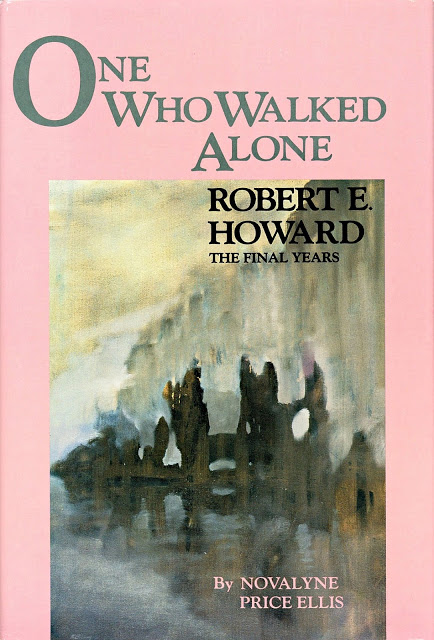 of a time machine) is this lengthy memoir by his almost-girlfriend Novalyne Price.
of a time machine) is this lengthy memoir by his almost-girlfriend Novalyne Price.
The two became friends when she took a teaching job at the high school in Cross Plains, Texas in August 1934, and spent a lot of time together until July of the next year, when he found out she was dating his friend Truett Vinson. But their friendship continued, albeit less frequently, until he shot himself in June 1936.
Authors (Adventures Fantastic): John D. MacDonald was born on this date, July 24, in 1916. I’ve written about him before (see here, here, and here).
Although he’s probably best remembered today as the author of the Travis McGee series of men’s adventure thrillers, MacDonald learned his chops in the pulps, albeit during the tail end of the pulp era.
Games (Follow Me and Die): As an RPG content producer, I’ve spent a lot of money on fancy tools, some that require more money when versions are updated, etc. Check out episode 77 of my podcast where I discuss this topic*.
Several years ago, I was very big into Linux and free and open source software. I’m still a proponent of free and open source software, I just had issues in the past finding Linux based solutions for some of my workflows.
Publishing (Original Edition Fantasy): Call for Articles!
I’m putting together a one-shot homage to classic 80’s Dragon magazine. It will be called Drakar and have the look, feel, and layout of that era. Including 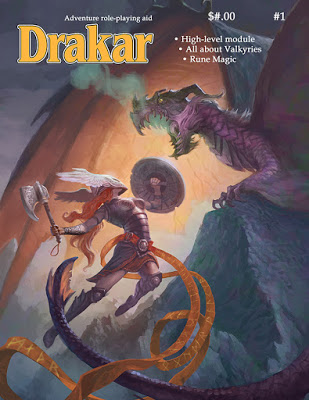 articles, ads, even humor!
articles, ads, even humor!
In order to fill this up I’m looking for articles from the OSR. It can be an original article, an excerpt from your homebrewed RPG or campaign. This issue is going to be generally Norse Mythology themed, but just like those old magazines it will be a hodge-podge of cool stuff, so anything you enter that is RPG related will work. No bias towards any particular system.
Miniatures (Tower of Zenopus): I really really like the Grey Knights lore in 40K I remember them being an interesting unit in Rogue trader and then in  Epic where they were a single unit you might take if fighting Chaos but not an army on their own. Then came 5th edition when they received a separate Codex and suddenly they were a whole separate force with some really nice miniatures all their own. It’s a great look, a great theme, and a great concept for an elite strike force in the game.
Epic where they were a single unit you might take if fighting Chaos but not an army on their own. Then came 5th edition when they received a separate Codex and suddenly they were a whole separate force with some really nice miniatures all their own. It’s a great look, a great theme, and a great concept for an elite strike force in the game.
Authors (DMR Books): I consider REH to be one of the greatest fantasists of all time and I am not alone. I have admired and been inspired by both his 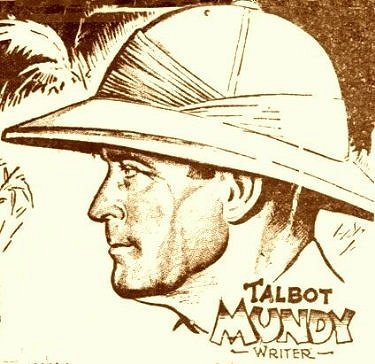 prose and his poetry but I also appreciate where his writings have led me. If I had never read Howard, I might never have read the horror of Clark Ashton Smith, the histories of Harold Lamb or the adventures shrouded in the mysteries of the East penned by Talbot Mundy. If you take a look at the books listed in Robert E. Howard’s personal library, you will find thirteen works by Talbot Mundy, so I think I can say that he was an influence on REH.
prose and his poetry but I also appreciate where his writings have led me. If I had never read Howard, I might never have read the horror of Clark Ashton Smith, the histories of Harold Lamb or the adventures shrouded in the mysteries of the East penned by Talbot Mundy. If you take a look at the books listed in Robert E. Howard’s personal library, you will find thirteen works by Talbot Mundy, so I think I can say that he was an influence on REH.
RPG (Black Gate): Funny how some of us predicted video games would virtually wipe out RPGs and board games, and yet here we are. We have entered a 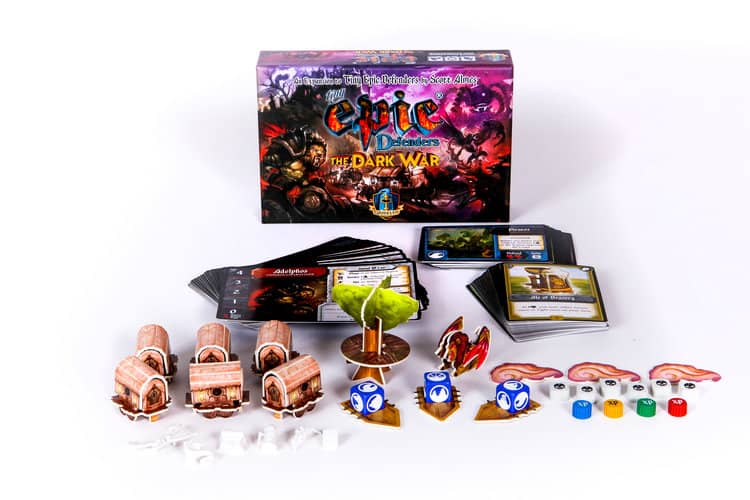 golden age of tabletop gaming. So many new games, with great graphics, great playing pieces, and game mechanics that expand on systems that have been tried, tested, and improved on for decades.
golden age of tabletop gaming. So many new games, with great graphics, great playing pieces, and game mechanics that expand on systems that have been tried, tested, and improved on for decades.
I’m certainly not the first to make this observation, but much of this game renaissance must be thanks to funding platforms like Kickstarter. No longer limited to what a few big corporations deemed were mass-marketable enough to release to retail outlets, we could now team up with a few hundred or a few thousand other people who wanted what we did and JUST PAY TO MAKE IT HAPPEN OURSELVES.
Fiction (Gravetapping): In the late 1960s and early 1970s Michael Crichton published eight thrillers under the pseudonym John Lange. The Lange novels are something very different than the science fiction Michael Crichton became famous for writing. They are thrillers more in the vein of Desmond Bagley, Jack Higgins, and Gavin Lyall, and I like them much more than Crichton’s big bestsellers.
Celluloid (Future War Stories): Since the first hunting stories where told around a fire, humans have been captivated by tales of combat and heroism. That just who we are at our core and those primitive stories have been upgraded due to the progress of technology and scientific understanding to forge the genre of science fiction. Today, tales of space warriors battling among the stars with laser swords and ray-guns are commonplace within the realm of popular entertainment. When most think of science fiction combat scenes from sci-fi on TV, in anime, video games, or in popular films; they imagine those large-scale space battles with starships trading colorful bolts of killer light.
Games (Player None): The Witcher 2: Assassin of Kings (2011), based on the works of Andrzej Sapkowski, developed and published by CD Projekt RED
Geralt of Rivia wakes up shackled in a dungeon. He is there to be interrogated by one Vernon Roache, the head of the special forces of Temaria. The reason for this visit in the darkest of dungeons is told in flashbacks during the tutorial of the game: Geralt is under suspicions of killing the king of Temaria, Foltest. He is innocent to the crime, as the killer is a skilled assassin Letho, a bear of a man, who is working with Scoia’tael guerillas who are more than happy to aid a human causing havoc among his own people.
Celluloid (Running Iron Report): The Lighthorsemen is a movie about the Australian Light Horse regiments and their famous charge on Beersheba in 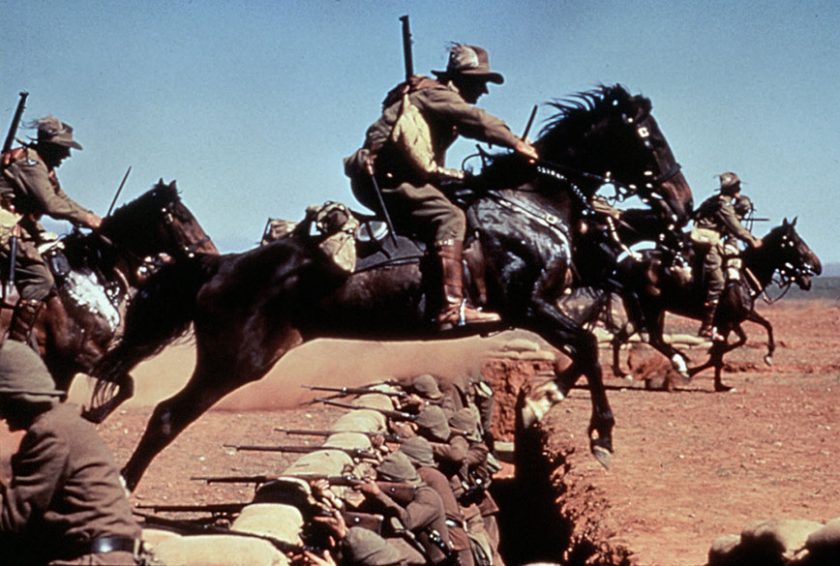 Palestine in World War I. The taking of Beersheeba turned the Ottoman Turks out of their defensive line in Palestine and marked a turning point in the campaign in the Middle East.
Palestine in World War I. The taking of Beersheeba turned the Ottoman Turks out of their defensive line in Palestine and marked a turning point in the campaign in the Middle East.
For the purposes of this essay; the charge is almost an anticlimactic moment.
I wish that a different way could be found to teach history in our schools. History teaching incorporating the Australian Light Horse would be a lot more exciting than memorizing meaningless acts and dates. The “Australian Light Horse” — now there is phrase to stir the blood of any young man.
That Wired now admits that there were woman in SF before the 70’s is progress, I suppose. It gives lie to the idea that some group (who knows the history of the genre better than Wired) might try to keep women of SF. To do that would require a time machine.